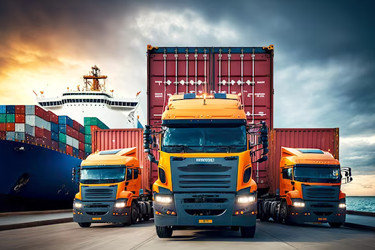

Introduction:
The logistics landscape in Afghanistan is a complex terrain shaped by historical, geopolitical, and infrastructural factors. As the country undergoes dynamic transformations, understanding the intricacies of Afghan logistics is crucial for both regional and global stakeholders.
Geopolitical Dynamics:
Afghanistan’s geopolitical position at the crossroads of Central and South Asia has significant implications for its logistics network. The country’s borders with Iran, Pakistan, Turkmenistan, Uzbekistan, and Tajikistan make it a strategic hub for trade and transit. However, political instability and regional tensions have historically posed challenges to seamless logistics operations.

Infrastructure Challenges:
The rugged terrain and insufficient infrastructure present formidable obstacles to efficient logistics in Afghanistan. Road networks are often inadequate, and the mountainous landscape complicates transportation. Developing and upgrading transportation infrastructure, including roads and railways, is a priority for improving logistics capabilities.
Customs and Regulatory Environment:
The regulatory environment, including customs procedures, can significantly impact the ease of doing business in Afghanistan. Streamlining and modernizing customs processes is essential to reduce delays and enhance the overall efficiency of the logistics sector.
Security Concerns:
Security remains a paramount concern for logistics operations in Afghanistan. Ongoing conflicts and the presence of insurgent groups pose risks to the transportation of goods. Implementing robust security measures and fostering collaborations between government forces and private enterprises are essential for mitigating these risks.
Opportunities for Growth:
Despite the challenges, there are notable opportunities for growth in Afghan logistics. As the country rebuilds, there is an increasing demand for the transportation of construction materials and equipment. Additionally, the agriculture sector presents opportunities for the transportation of goods, including fresh produce, to domestic and international markets.
Digital Transformation:
Embracing digital technologies is crucial for modernizing Afghan logistics. Implementing tracking systems, digital documentation, and other technology-driven solutions can enhance transparency, reduce delays, and improve overall efficiency in the supply chain.
Humanitarian Logistics:
Given Afghanistan’s history of conflict and natural disasters, humanitarian logistics plays a vital role. Coordinating the timely and efficient delivery of aid to affected areas requires collaboration between international organizations, non-profits, and the Afghan government.
International Partnerships:
Building strong partnerships with neighboring countries and international organizations is essential for fostering a resilient and interconnected logistics network. Collaborative efforts can lead to the development of shared infrastructure projects and the establishment of more efficient trade routes.
Conclusion:
In conclusion, the dynamics of Afghan logistics are multifaceted, reflecting the country’s geopolitical significance and unique challenges. While security concerns and infrastructure limitations persist, strategic investments, regulatory reforms, and technological advancements present avenues for growth and improvement. As Afghanistan continues its journey towards stability and development, a comprehensive approach to logistics is indispensable for harnessing its full economic potential and facilitating regional connectivity.

